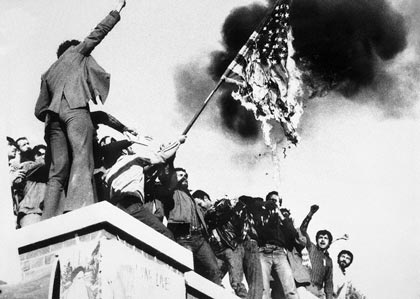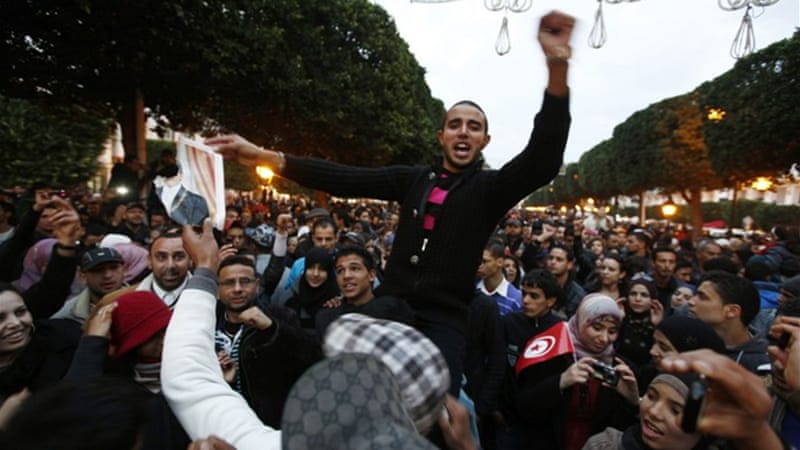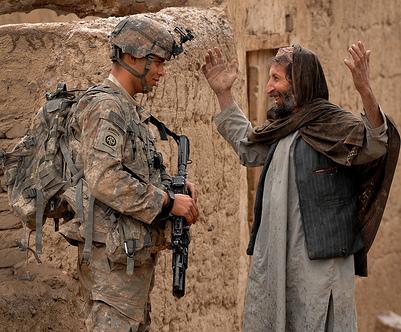21st Century Wire says…
One of the great hangovers of the European conquests and the short-lived empires that followed is a phenomenon known as ‘Orientalism’.
The term can be defined as a general patronizing Western attitude towards people who live in Middle Eastern, Asian and North African societies. In a seminal analysis developed by Palestinian-American scholar Edward Said, it’s been essential for Western societies to characterize ‘the other’ (the oriental man) as “static and undeveloped” and thus repeatedly depicted in a standardized, stereotypical form, as opposed to the advance Western man who is “developed, rational, flexible, and superior.”[2]
Its roots go back much further than modern European, or even Roman history. It’s tribal. When settlements began to grow outside of their borders and man began to move and migrate, and subdue his neighbor in order to claim the bounties and treasures of conquest, Orientalism was born.
In modern times, this process has been accelerated and weaponized through mass media. In other words, in order to subjugate ‘the other’, imperialists must first feel superior to them before eventually dehumanizing ‘the other’ and if necessary, killing them. This process of psychological conditioning is especially important for military personnel before they are sent out into theater of war. It’s easier to shoot or injure someone if one believes they are ‘backwards.’
It seems as if the events of September 11, 2001 were specifically designed as a catalyst – to reboot and re-energize Orientalism 2.0, which is still the dominant narrative of geopolitical conflict in the 21st century.
Presently, the US and Europe are being aggressively targeted my social engineers and mass media with a relentless program of weaponized Orientalism designed to relegate mainly Muslims and Arabs to a second tier human status, most certainly in preparation for any large conflict in the near future.
Here’s a deeper look into the mechanics of this Western phenomenon…

IRANIAN REVOLUTION: When the Shah fell in 1979, a progression of events began which helped re-shaped the current Western paradigm.
Mahdi Darius Nazemroaya
Strategic Culture Foundation
The notion that the majority of terrorist attacks are committed by Arabs or Muslims not only lacks a historical perspective, but is an unempirical argument that is tied to modern Orientalism that is alive and kicking.
Orientalism, itself is heavily tied to US views of exceptionalism. It is an area of thinking where exceptionalists and racist views coincide profoundly. In fact, there is a thin line between all three.
In an outdated linear and geo-ethnocentric way of thinking, whatever societies are located east, as well as south, of the US, Canada, and Western Europe — particularly France, Britain, and the Germanic-speaking countries — are viewed as deficient and inferior. In Europe, this means everyone east of Germany is either tacitly or overtly portrayed as culturally backward. This means the Balkans, Slavic peoples, Albanians, Greeks, Turks, Romanians, Orthodox Christianity, and the ex-Soviet republics.
Under Orientalist thinking in the US, even lower on the totem pole are non-Europeans. This means the peoples of Africa, Asia, Latin America, and the Caribbean.

Like exceptionalist attitudes, Orientalist views are important for supporting Washington’s foreign policy and wars as a noble enterprise. US Orientalist attitudes see the rest of the world, from Mexico to Iraq and Russia, as needing US tutelage and stewardship. This is a reconstruction of what was called the «white man’s burden» that was used to justify the colonization of people that were perceived as non-whites.
The Relationship between Terrorism and Arabs and Muslims
Arabs and Muslims are major quarries of US [American style] Orientalism. Either tacitly or openly, both Arabs and Muslims are portrayed as uncivilized subjects. Terrorism is deeply tied to images of Arabs and Muslims in the minds of many US citizens and this is why it is falsely believed that most terrorists are Arabs or Muslims.
To varying degrees whenever individuals that are Muslims or ethnically Arabs commit crimes in so-called Western societies, such as Canada or the US, the assessments made have either tacitly or openly passed judgment on all Muslims or Arabs collectively. The Arab and Muslim backgrounds of these individuals is used to explain their crimes. The crimes of Arab or Muslim individuals are not presented exclusively as the crimes of individuals, but as a collective crime. These notions ignore the facts that Muslims are the biggest victims of terrorism.
Seven out of the top ten countries afflicted by terrorist attacks are predominately Muslim, according to the Australia-headquartered Institute for Economics and Peace’s Global Terrorism Index for 2014, which is based on the University of Maryland’s meta-analytic Global Terrorism Database. Using a maximum value of ten and a minimum value of zero, the entire international community is systematically ranked. Although the definition of terrorist incidents in the University of Maryland’s Global Terrorism Database can definitely be debated over, important inferences can be made from its data sets and the Institute for Economics and Peace’s Global Terrorism Index.
Several key features can be noticed, if readers look at the nature and identities of the perpetrators of what is classified as acts of terrorism among the top thirty countries in the Global Terrorism Index for 2014. The first feature is that the violence generated from the ascribed terrorist groups falls within the framework of insurrections and civil wars that are generally equated as acts of terrorism. For example, this is the case for countries like Somalia, the Philippines, Thailand, Colombia, Turkey, Mali, the Democratic Republic of Congo, and Nepal, which are respectively ranked seventh, ninth, tenth, sixteenth, seventeenth, twenty-second, and twenty-fourth place. Under closer examination several of these insurgencies can be tied to international rivalries and power plays by the US and its allies. This becomes obvious when more observations are made.
The second feature is that the majority of the cases of terrorism in the indexed countries, especially the higher ranked they are on the list, are connected to Washington’s direct or indirect interference in their affair. For example, this is the case for Iraq, NATO-garrisoned Afghanistan, Pakistan, Syria, Somalia, Yemen, Russia, Lebanon, Libya, the Democratic Republic of Congo, Sudan, South Sudan, China, and Iran, which are respectively ranked first, second, third, fifth, seventh, eighth, eleventh, fourteenth, fifteenth, eighteenth, nineteenth, twentieth, twenty-fifth, and twenty-eighth. US-led wars, Pentagon interventions, US-backed coups, or US government support for so-called «opposition» groups or proxy regimes have all been a basis for the affliction of terrorism in these countries. Out of the above countries, according to the Global Terrorism Index, 82% of global deaths that are assigned to acts of terrorism happen in NATO-garrisoned Afghanistan, Iraq, Pakistan, Syria, and Nigeria. The ties to US foreign policy should be clear.
Not all Arabs/Muslims are Terrorists, but are Most Terrorists are Arabs / Muslims?

(Image Source: E-International Relations)
It has been claimed that if all terrorists are not Arabs or Muslims, that most terrorists are Arabs or Muslims. Is this true or another myth? An empirical look at data compiled in the US and Europe will help answer this question.
In the US, which is ranked in thirtieth in the Global Terrorism Index for 2014, the majority of terrorists are not non-Muslims according to the Federal Bureau of Investigation (FBI). Inside the US, 6% of terrorist cases from 1980 to 2005 were committed by Muslim terrorists. [1] The other 94% of terrorism cases and terrorists — in other words, the vast majority — were not related to Arabs, Muslims, or Islam. [2]
While the FBI’s methodology on what is a terrorist attack and what is not a terrorist attack is questionable, it will be accepted herein for arguments sake. According to the same FBI report, there were actually more terrorist attacks launched by Jews from 1980 to 2005 on US soil. The same FBI data was compiled by the Princeton University linked webpage loonwatch.com in a chart that describes the breakdown cases of terrorist attacks on US soil from 1980 to 2005 as follows: 42% Hispanic terrorism; 24% extreme left-wing group terrorism’ 16% other types of terrorists that do not fit into the other main categories; 7% Jewish terrorists; 6% Muslim terrorists; and 5% communist terrorists. [3]
While Muslim terrorist comprised 6% of the attacks on US soil from 1980 to 2005, Jewish terrorists and Hispanic terrorists respectively comprised 7% and 42% of the terrorist attacks in the US during the same period. There, however, is no fear mongering about Jews or Hispanic people. The same media and government focus is not given to them as is given to ethnic Arabs and Muslims.
The same pattern repeats itself in the European Union. Loonwatch.com also compiles data on terrorism in the European Union from the reports of the European Union’s European Police Office (Europol) from 2007, 2008, and 2009 in its annual EU Terrorism Situation and Trend Reports. [4] The data further distances Muslims from terrorist acts. 99.6% of the terrorist attacks in the European Union were committed by non-Muslims. [5] The number of failed, foiled, or successful terrorist attacks by Muslims in the EU from 2007 to 2009 was simply five attacks whereas the number of terrorist attacks by separatist groups was 1,352 attacks, which equates to approximately 85% of all terrorist incidents in the European Union. [6]
According to Europol, the number of failed, foiled, or successful terrorist attacks by so-called left-wing groups was 104 while another 52 attacks were categorized as non-specific. [7] In the same period, two attacks were attributed to so-called right-wing groups by Europol. [8]
There is a huge disparity in who is causing and committing terrorism and who is being victimized and blamed for it. Despite the overwhelming facts, whenever Arabs or Muslims commit crimes and acts of terrorism, they are the individuals that are focused on whereas non-Arabs and non-Muslims are ignored.
If it does acknowledge that Muslims are the biggest victims of terrorism, Orientalism still manages to assess some guilt to the victims of terrorism by tacitly portraying them as members of a savage community or society that are as much prone to facing a violent end as animals in a jungle.
Imagery and Empire
Illusions are at work in the world. The truth has been turned on its head. The victims are being portrayed as the perpetrators.
Whether stated candidly, implied, or unmentioned, the notion of Arabs and Muslims as savages and terrorists plays on the imagery that the so-called Western World embodies equality, freedom, choice, civilization, tolerance, progress, and modernity whereas the so-called Arab-Muslim World underneath its surface represents inequality, restrictions, tyranny, a lack of choices, savagery, intolerance, backwardness, and primitiveness.
This imagery actually serves to de-politize the political nature of tensions. It sanitizes the actions of empire, from coercive diplomacy with Iran and support for regime change in Syria to the invasions of Afghanistan and Iraq and US military intervention in Somalia, Yemen, and Libya. As mentioned earlier, in varying degrees, this imagery extends to other places that are seen by US Orientalists as non-Western places or entities, like Russia and China.
At its roots, this imagery is really part of a discourse that sustains a system of power that allows power to be practiced by an empire over “outsiders” and against its own citizens. It is because of US foreign policy and economic interests that Arabs and Muslims are unempirically portrayed as terrorists while real world data that shows that US intervention is creating terrorism is ignored. This is why there is a fixation on the attack on Parliament Hill in Canada, the Martin Place hostage crisis in Sydney, and the Charlie Hebdo attack in Paris, but US, Canadian, Australian, and French governmental support for terrorism that has cost tens of thousands of lives in Syria is ignored.
NOTES:
[1] Federal Bureau of Investigation, Terrorism 2002-2005, (US Department of Justice, 2006): pp.57-66
[2] Ibid.
[3] «All Terrorists are Muslims…Except the 94% that Aren’t», loonwatch.com, January 20, 2010.
[4] «Europol Report: All Terrorists are Muslims…Except the 99.6% that Aren’t,» loonwatch.com, January 28, 2010.
[5-8] European Police Office, EU Terrorism Situation and Trend Report 2007 (The Hague, Netherlands: Europol, March 2007); European Police Office, EU Terrorism Situation and Trend Report 2008 (The Hague, Netherlands: Europol, 2008); European Police Office, EU Terrorism Situation and Trend Report 2009 (The Hague, Netherlands: Europol, 2009).
READ MORE WAR ON TERROR NEWS AT: 21st Century Wire War on Terror Files
–















